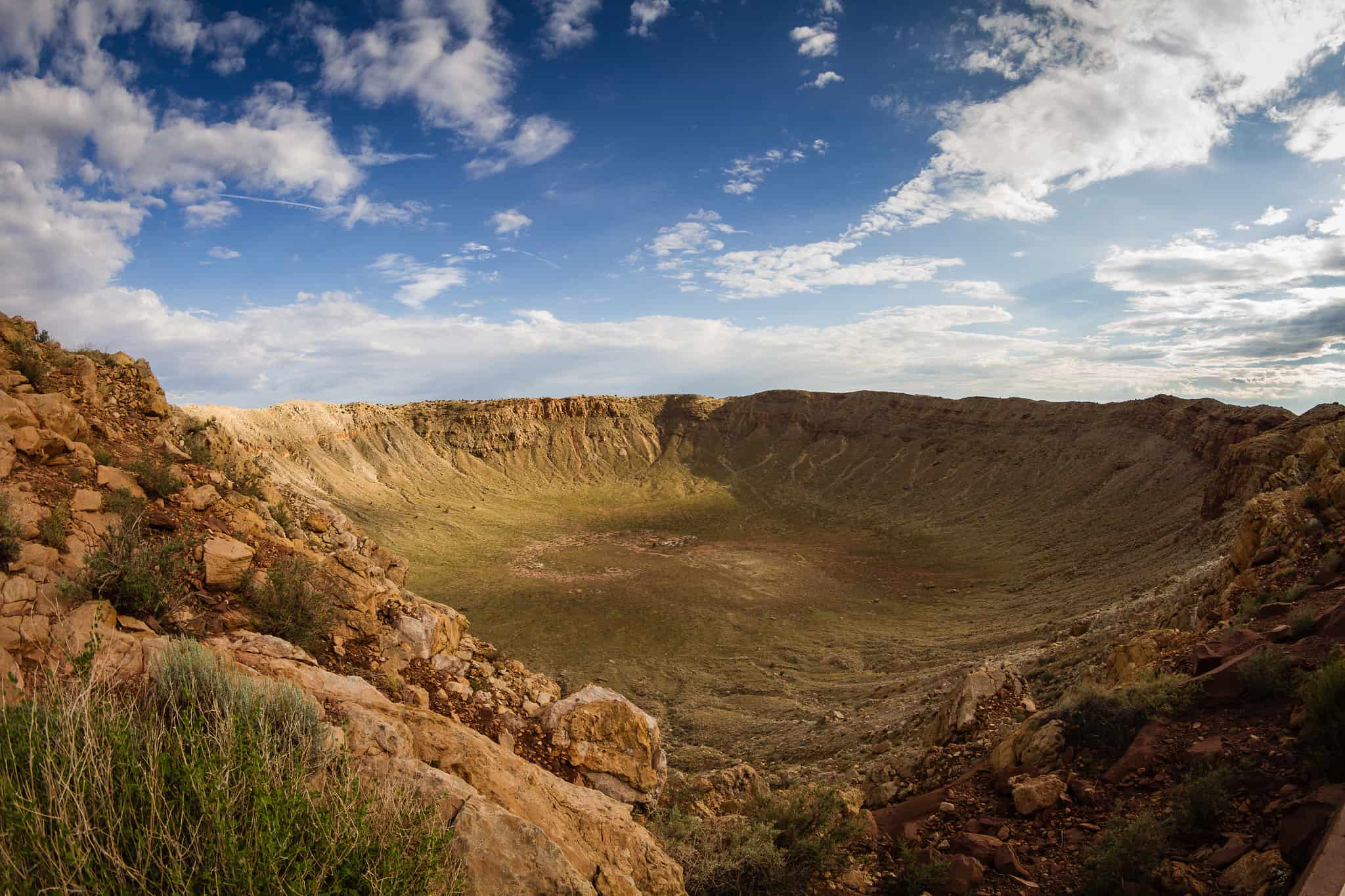The location and climate of Arizona has led to incredible natural formations and supports unique desert flora and fauna. Prehistoric volcanoes, ancient meteors and a determined river have created wondrous landscapes that hardly seem part of the world. With no earthquakes, tornadoes or floods, the delicate structures that have been carved over the centuries remain intact for visitors to admire.
Antelope Canyon
Page, Arizona
 https://www.flickr.com/photos/alegiann/
https://www.flickr.com/photos/alegiann/
Everyone has heard of the Grand Canyon and seen images of the amazing chasm carved by the Colorado River, but water has carved other incredible structures over the centuries.
Antelope Canyon is located on the northern edge of the state on Navajo land and can only be visited with a guided tour. Much of the chasm is defined as a “slot canyon”, a very narrow, steep formation that floods rapidly when rain falls upstream. Guides are trained in swift-water safety and can lead groups to permanent escape structures if necessary.
Two sections of canyon are open to tours and both are extremely photogenic. The Upper Canyon is more accessible and has a wider gap at the top, allowing more shafts of sunlight. The Lower Canyon has several flights of stairs and less stable footing. Because of the relative difficulty, the lower portion attracts more photographers and fewer casual hikers. However, both canyons are quite popular.
Kartchner Caverns State Park
Cochise County, Arizona
 https://www.flickr.com/photos/crackerbunny/
https://www.flickr.com/photos/crackerbunny/
Located in the southern portion of Arizona, Kartchner Caves were discovered in 1974 and kept a secret until the area became a state park in 1988.
To decide if the system qualified as a suitable for protection, the governor of Arizona paid a secret visit to the caverns and spent three hours crawling through them to reach the more dramatic chambers. Thanks to the protection offered by the state, the limestone caverns are in pristine condition with only a few sections – the most picturesque – open to the public.
The open sections include the Throne Room, which contains one of the longest soda straw stalactites in the world. These are hollow tubes that grow when mineral-rich water flows through the centre and leaves deposits on the tip. The Big Room has a large formation of brushite moonmilk, a crystalline substance that “flows” over roofs of caverns.
Chiricahua National Monument
Cochise County, Arizona
 https://www.flickr.com/photos/snowpeak/
https://www.flickr.com/photos/snowpeak/
The entire area in the southeastern part of Arizona is filled with curious vertical rock formations known as hoodoos. Sometimes called mushroom rocks or fairy chimneys, the structures are formed when a hard stone sits on top of softer rock that is easily eroded by the elements. The hard rock protects what’s beneath it and the resultant formation is often a thin column with the appearance of a larger stone precariously perched on top. Despite the fragile appearance, the formations have been standing since before man roamed the Earth.
The Chiricahua region is believed to represent the remnants of a giant volcanic eruption that occurred about 27 million years ago. There are 27 km of trails through the park and campsites if you want to spend several days, or go for the scenic drive through the formations that will take less than an hour.
Grand Falls
Painted Desert
 https://www.flickr.com/photos/72213316@N00/
https://www.flickr.com/photos/72213316@N00/
Visiting this formation that’s northeast of Flagstaff requires a bit of timing to appreciate the full effect.
Several thousand years ago lava from Merriam Crater emptied into the Little Colorado River and created a dam. The river changed its course as a result, and the falls formed where the river returned to its original course. There are no paved roads in the area and the closest road requires a 4X4 vehicle at times to manage the river crossings.
A visit to the 56-m falls needs to be done after the monsoons have filled the Little Colorado River, normally March and April or just after a large thunderstorm. When the river is flowing, the sediment-filled water flows over the falls in a chocolaty stream that is incredible to see. The falls are within the Painted Desert and worth a side trip even if you aren’t confident there will be much water.
Meteor Crater
Near Winslow, AZ
 https://www.flickr.com/photos/rickmach/
https://www.flickr.com/photos/rickmach/
An hour or so away from Grand Falls is the best-preserved meteor impact site in the world. Curiously, the site is named after the nearest post office – Meteor - which was probably named for the impact site. The crater was previously known as the Canyon Diablo Crater and the Barringer Crater, and fragments of the meteor in various museums may have any of these three names on the labels. Another curious fact is that the crater is privately owned by the Barringer family.
Some 50,000 years ago the area around the crater was cool and damp, allowing the nickel-iron meteorite to slam into the earth, pushing the soft ground up around its sides. Most of the meteorite was vaporized by the impact and only a few fragments have been found.
More American Southwest on Canadian Traveller:


